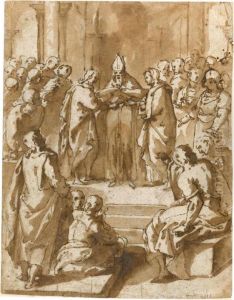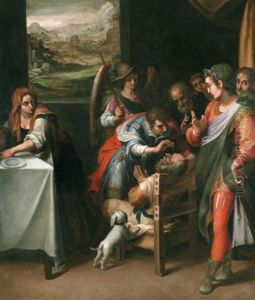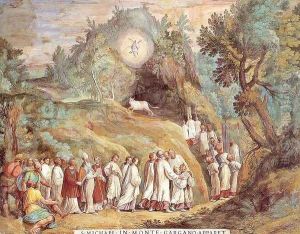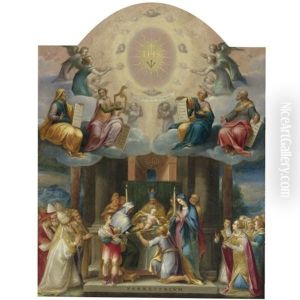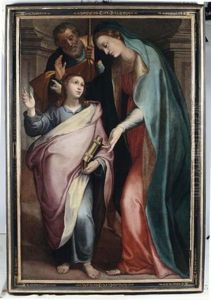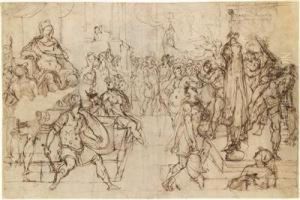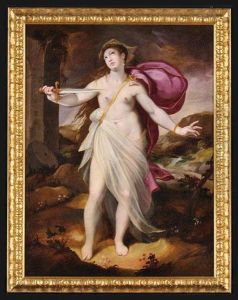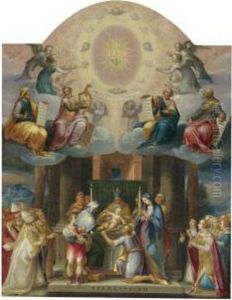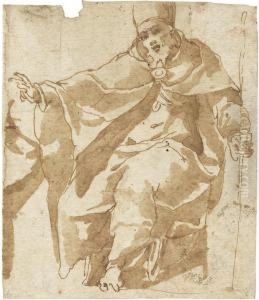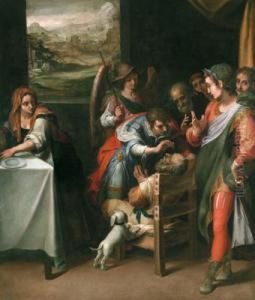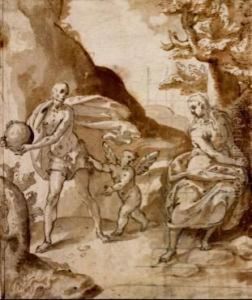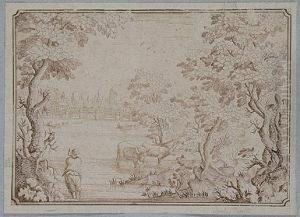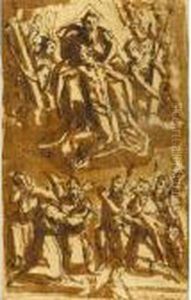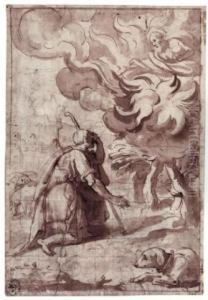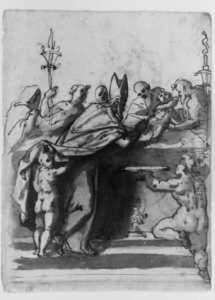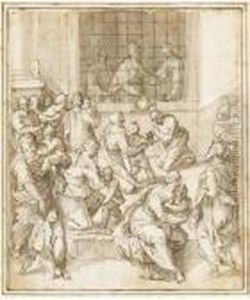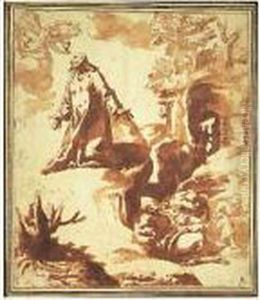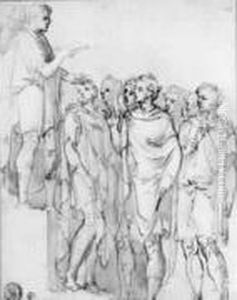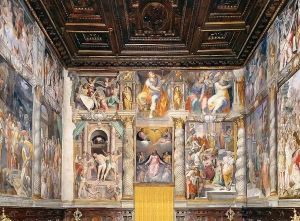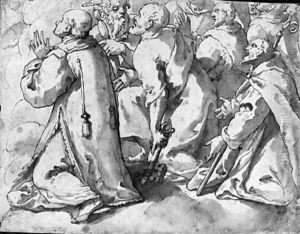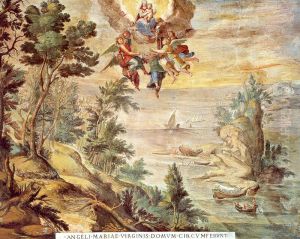Cesare Nebbia Paintings
Cesare Nebbia was an Italian painter from the late Renaissance period, specifically associated with the Mannerist style. Born in Orvieto, Italy, in 1536, Nebbia made significant contributions to the art world during his lifetime, which lasted until 1614. His work is particularly noted for its dynamic compositions and the elaborate use of color, characteristics that align him with the Mannerist movement that sought to go beyond the harmonious ideals of the High Renaissance.
Nebbia's career was marked by a series of prestigious commissions that highlighted his talent for both fresco and oil painting. He was heavily involved in the decoration of the Orvieto Cathedral, where his frescoes are among the most admired. His work in Orvieto established him as a leading artist of his time and opened the doors to further commissions in other significant buildings and churches.
Beyond Orvieto, Cesare Nebbia's influence spread to Rome, where he was involved in the decoration of the Vatican under the patronage of Pope Sixtus V. In Rome, he collaborated with other artists of the period, contributing to the grandiose projects that defined the city's artistic landscape in the late 16th century. Among his most notable works in Rome are his contributions to the Vatican Library and the Scala Santa (Holy Stairs) at the Lateran.
Nebbia's style was characterized by its elaborate ornamentation and the dynamic arrangement of figures within his compositions, features that made his work stand out among his contemporaries. Despite his success and contributions to the Italian Renaissance, Nebbia's name is not as widely recognized as some of his contemporaries. However, his work continues to be studied and admired for its artistic merit and historical significance.
Throughout his career, Nebbia trained and influenced a number of artists, contributing to the spread of the Mannerist style across Italy. His legacy is preserved in the frescoes and paintings that adorn the walls of churches, cathedrals, and palaces, serving as a testament to his artistic skill and vision. Cesare Nebbia's death in 1614 marked the end of an era, but his contributions to the world of art remain immortalized in the stunning works he left behind.
